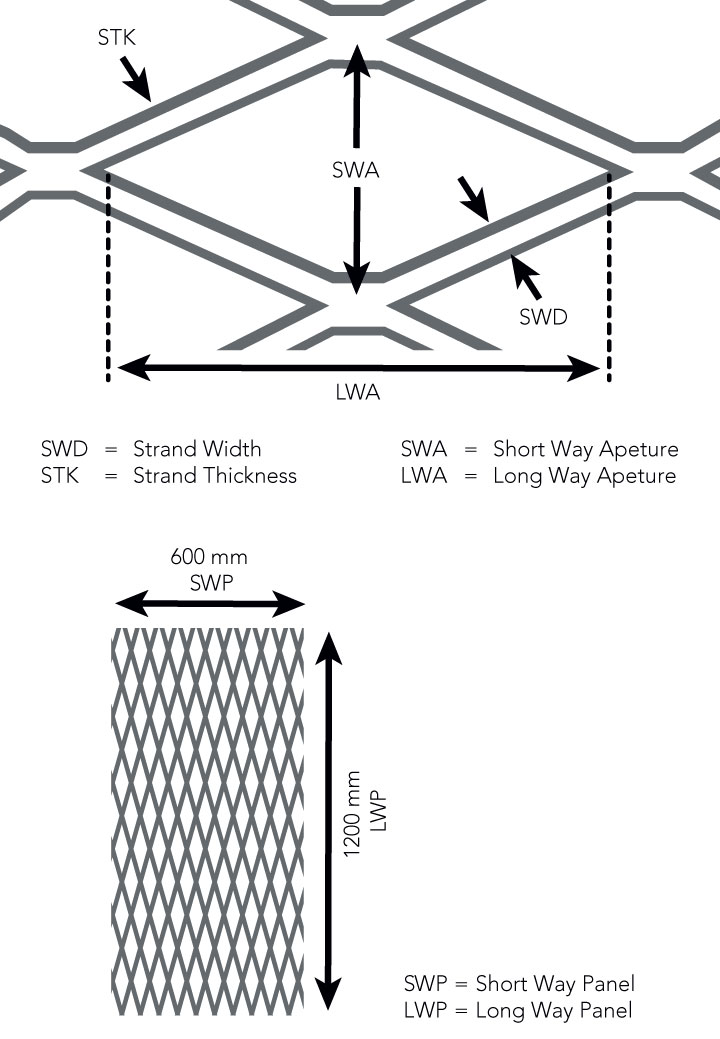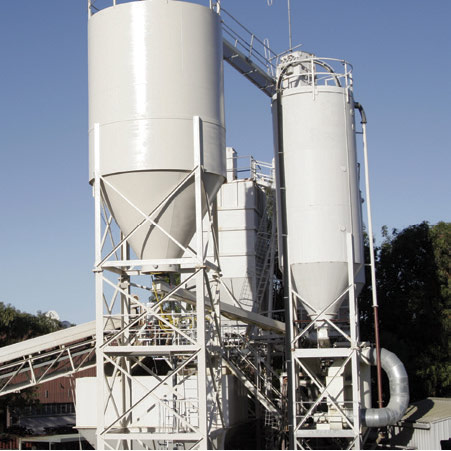

Our versatile range of expanded metal is available in mild steel, stainless steel, aluminium, zintec, titanium and nickel alloys. Also with your choice of coating or finish.
sheets can be cut to size and are available in various coil thicknesses, in either raised or flattened mesh. Various tolerances are also available, and all deliveries are packed according to customer requirements.
Expanded metal is stronger than an equivalent weight of wire mesh, for example chicken wire. This is because the material is flattened, allowing the metal to stay in one piece. The other benefit to expanded metal is that the metal is never completely cut and reconnected. This allows the material to retain its strength.
Some commonly used shapes are circles, squares and diamonds, with diamonds being the most popular shapes. This is because of how well the shape absorbs energy and resists mechanical deformation after installation. Other design considerations are the size and angles of the shapes, which will also affect how well the metal absorbs energy and where the energy is spread throughout the expanded metal.
For the diamond shape, there are at least four different angles that come into account, the two acute and two obtuse angles. The larger the angles, the less strength the shape will have because there would be too much space inside the shape. However, if the angles are too small, strength is lost because the shape is too close together, so there is no space for the structure to hold.
The angle in which the shapes are laid also plays a significant role. If the angle is zero the ends of the shape point to the start and the end of the sheet, making straight lines across the sheet of diamonds. This option provide the most strength when it comes to compressing the sheet on its side. This can even take more pressure than a solid piece of metal because the sheet will compress and spread the pressure throughout the sheet. The other four commonly used angles are 60˚, 90˚, 90˚ plus 60˚, and 60˚ plus 90˚. A 60˚ angle puts the diamond diagonal at the start and end to the sheet. A 90˚ angle makes the diamond vertical to the start and the end of a sheet. The 90˚ plus 60˚ and 60˚ plus 90˚ angles combine both a 60˚ angle and a 90˚ angle; the order of the angles is respective to the order in naming.


Expanded metal is a very durable and strong material, unlike lighter and less expensive wire mesh. For this reason it is frequently used to make fences, walkways, and grates.
The many small openings in the material allow flow through of air, water, and light, while still providing a mechanical barrier to larger objects. Another advantage to using expanded metal as opposed to plain sheet metal is that the exposed edges of the expanded metal provide more traction, which has led to its use in catwalks or drainage covers.
Large quantities of expanded metal are used by the construction industry as metal lath to support materials such as plaster in walls and other structures. Expanded metal is also used by artists, especially sculptors, who use the material to form complex 3-dimensional surfaces and compound curves which can then be covered with plaster, clay, or other materials.
